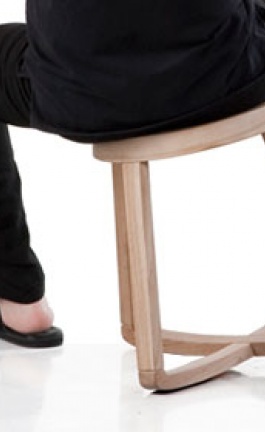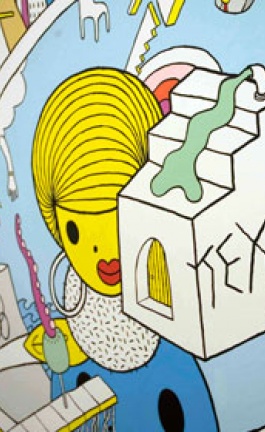JS Bach / Zaha Hadid Architects Chamber Music Hall at Manchester Art Gallery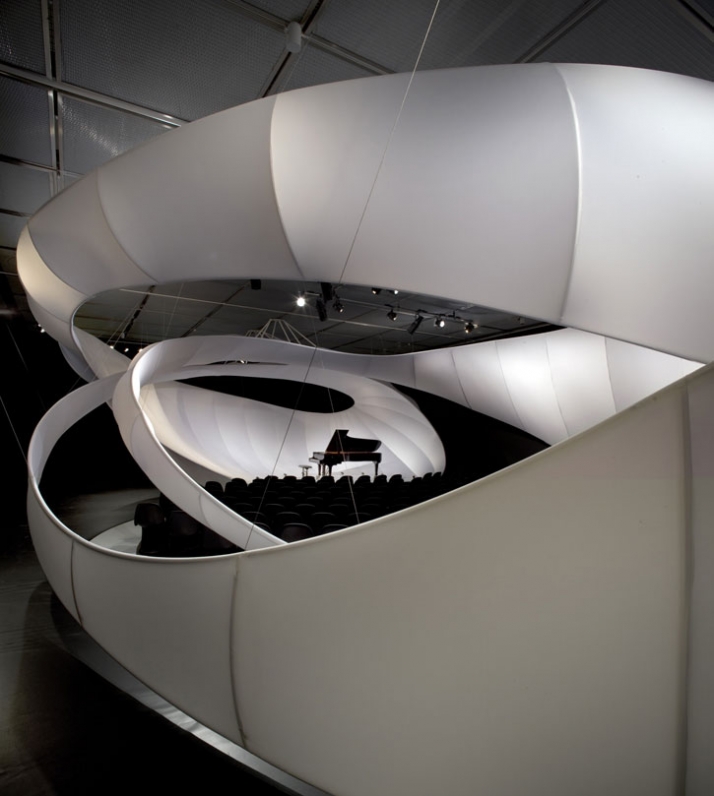
for Manchester International Festival
Images courtesy of Zaha Hadid Architects © Luke Hayes
After Yatzer's presentation of the Chamber Music Hall's 3D models on the 2d of May 2009, here comes the real thing!
Zaha Hadid Architects have created a unique Chamber Music Hall specially designed to house solo performances of the exquisite music of Johann Sebastian Bach.
A voluminous ribbon swirls within the room, carving out a spatial and visual response to the intricate relationships of Bach’s harmonies. As the ribbon careens above the performer, cascades into the ground and wraps around the audience, the original room as a box is sculpted into fluid spaces swelling, merging, and slipping through one another.
“The design enhances the multiplicity of Bach’s work through a coherent integration of formal and structural logic. A single continuous ribbon of fabric swirls around itself, creating layered spaces to cocoon the performers and audience with in an intimate fluid space.” said Hadid.
JS Bach / Zaha Hadid Architects Chamber Music Hall at Manchester Art Gallery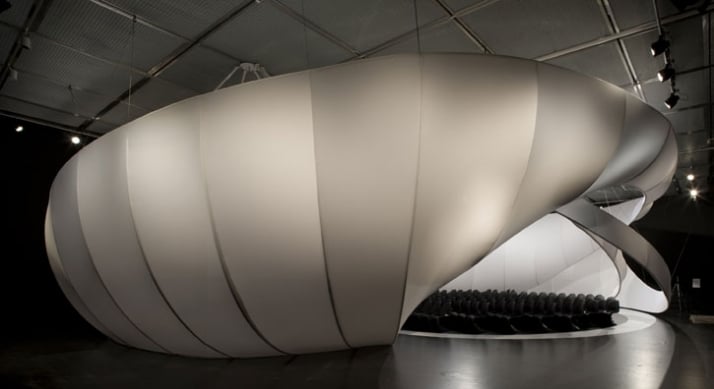
for Manchester International Festival
Images courtesy of Zaha Hadid Architects © Luke Hayes
The process of realizing the design involved architectural considerations of scale, structure and acoustics to develop a dynamic formal dialogue inseparable from its intended purpose as an intimate chamber music hall. A layering of spaces and functions is achieved through the ribbon wrapping around itself, alternately compressing to the size of a handrail then stretching to enclose the full height of the room. Circulatory and visual connections are continually discovered as one passes through the multiple layers of space delineated by the ribbon.
The ribbon itself consists of a translucent fabric membrane articulated by an internal steel structure suspended from the ceiling. The surface of the fabric shell undulates in a constant but changing rhythm as it is stretched over the internal structure. It varies between the highly tensioned skin on the exterior of the ribbon and the soft billowing effect of the same fabric on the interior of the ribbon. Clear acrylic acoustic panels are suspended above the stage to reflect and disperse the sound, while remaining visually imperceptible within the fabric membrane. Programmed lighting and a series of dispersed musical recordings activate the spaces between the ribbon outside of performance times. The installation is designed to be transportable and re-installed in other similar venues.
JS Bach / Zaha Hadid Architects Chamber Music Hall at Manchester Art Gallery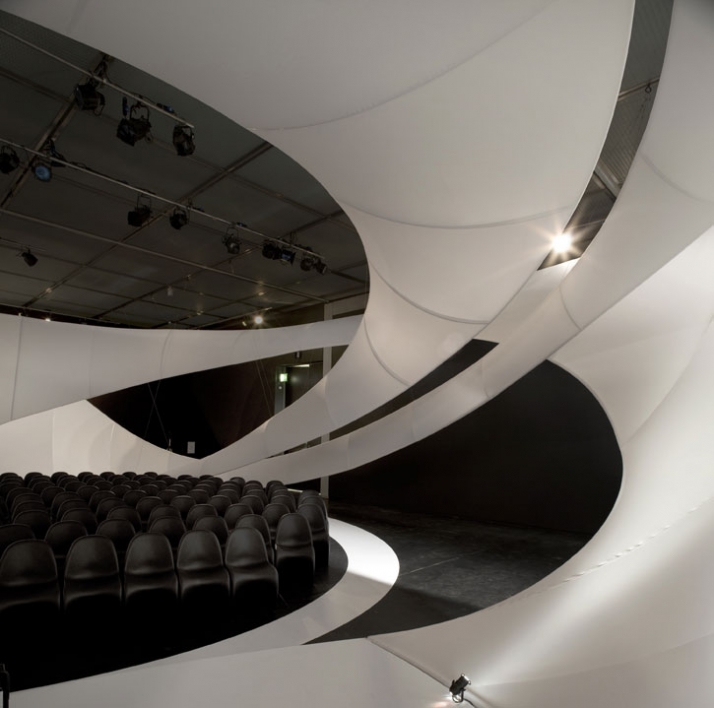
for Manchester International Festival
Images courtesy of Zaha Hadid Architects © Luke Hayes
Pivotal to its function is the performance of the ribbon. It has been designed to simultaneously enhance the acoustic experience of the concert while spatially defining a stage, an intimate enclosure, and passageways. It exists at a scale in which it is perceived as both an object floating in a room as well as a temporal architecture that invites one to enter, inhabit and explore. Festival Director Alex Poots said, “Zaha Hadid Architects consistently come up with challenging and innovative ideas. It has been wonderful to see the realisation of this project and experience such intimate performances from the leading concert musicians within it"
JS Bach / Zaha Hadid Architects Chamber Music Hall at Manchester Art Gallery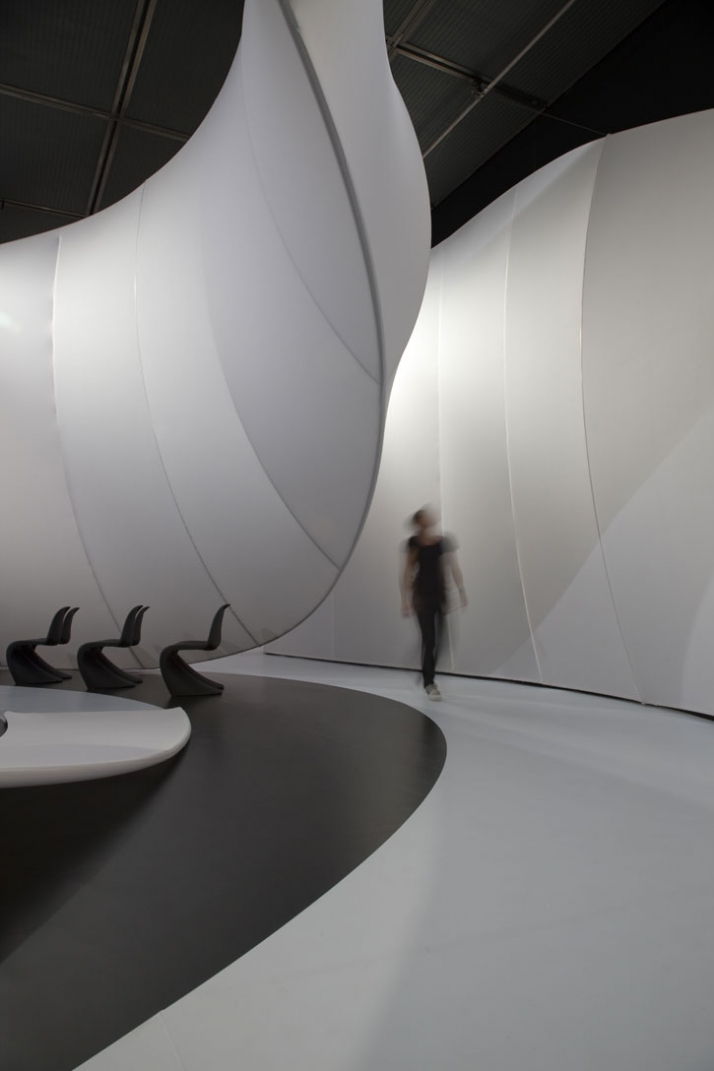
for Manchester International Festival
Images courtesy of Zaha Hadid Architects © Luke Hayes
text by acoustician Mark Howarth // Partner, Sandy Brown Associates
The challenge of the project was to take a gallery space primarily designed for visual art and help Zaha Hadid Architects in their vision to convert it into a modern extraordinary new performance space for chamber music.
The initial part of the design involved testing the baseline acoustic response of the gallery space and looking at how this could be enhanced by the installation. This included investigating how the finishes and shape of the room determined its reverberation time (a measure of how long it takes for sound to decay in a room), and caused unwanted flutter echoes from sound repeatedly reflecting back-and-forth between surfaces. The measurements also identified the level of ambient noise from external noise sources, such as road and air traffic, and from air conditioning systems within the building.
3D Model /// Courtesy of Tony Hogg Design and Base Structures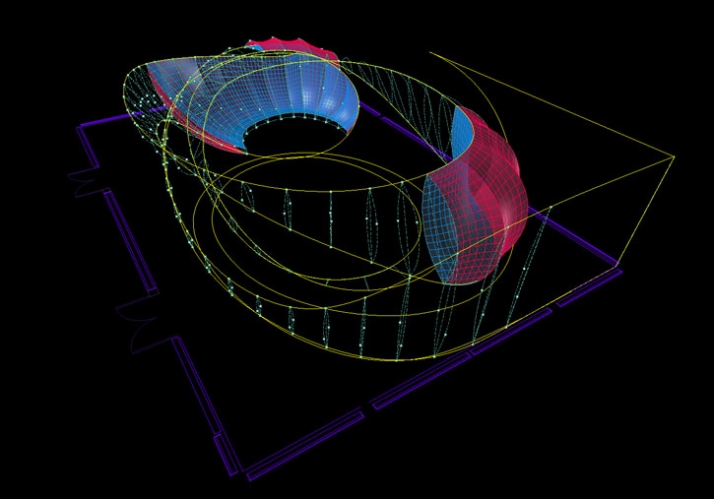
The selected gallery space is located towards the rear of the building, away from the noisy rumbling sound of Metrolink trams passing by the front. However, control of noise from the in-house air conditioning system to make it suitable for music was a challenge. The gallery has strict requirements for the regulation of air temperature and humidity to help preserve many of the precious works it houses. This meant it could not be turned off or reduced during performances. The importance of this was highlighted by the recent exhibition of 500 year old Leonardo da Vinci sketches in a connecting room to the new performance space. Control of noise from the air conditioning system was discussed with staff at Manchester Art Gallery and they were particularly helpful in carrying out works behind the scenes to help reduce noise intrusion to the new performance space.
3d model /// Courtesy of Zaha Hadid Architects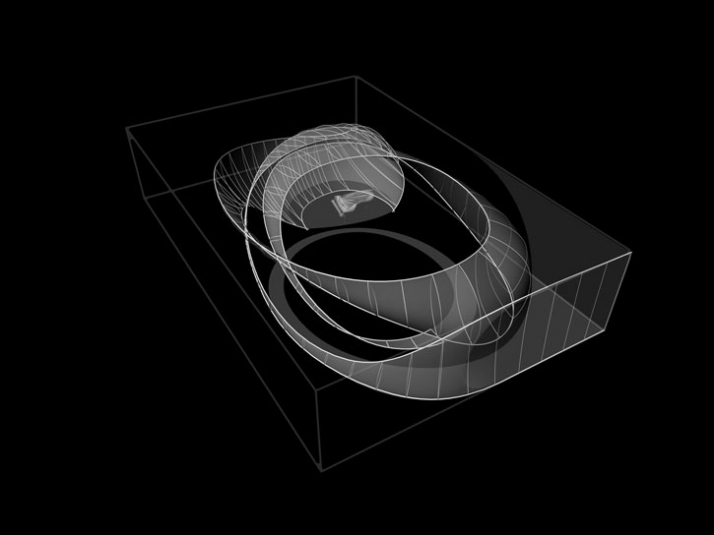
For optimum conditions for chamber music it is important to ensure that the reverberation time is not too long as this blurs individual notes so music can lose its intricacy. Equally it should not be too short as this provides a lack of response for the performer and causes the music to sound overly dry. The designers therefore looked at achieving a reverberation time of 1.4 to 1.7 s at mid-frequencies (500-1000 Hz) with a higher reverberation at lower (bass) frequencies to provide a warm room response.
Measurements in the room indicated the existing ceiling and the large void behind it provided a significant amount of acoustic absorption. This influenced the choice of materials for the installation as the designers wanted to avoid adding too much additional sound absorptive material to ensure the acoustics did not become too dry. Zaha Hadid Architects therefore investigated use of different materials for the installation, including various fabrics, metals and plastics. These were developed as 3D CAD models by Zaha Hadid Architects and were then imported into acoustic modelling software by Sandy Brown Associates. This enabled the investigation of different finishes and sculptural shapes to enhance acoustic conditions around the stage and audience areas of the space.
3d model /// Courtesy of Zaha Hadid Architects
The final installation uses a lightweight synthetic fabric (150 g/m2) supported on a rigid metal framework to provide the flowing sensual shape of the installation while minimising absorption. The shape of the frame and fabric acts to scatter sound reflections between parallel walls within the gallery to eliminate flutter echoes and provide a more even diffuse sound for audience members. Around the stage, specially shaped acrylic reflector panels have been carefully positioned and hidden within the fabric of the installation. These are designed to reflect sound with a short delay back towards the performer and out towards the audience to increase the clarity and strength of the music while maintaining the reverberant response of the room. The installation is currently under construction and further commissioning measurements are proposed prior to the first performance.
JS Bach / Zaha Hadid Architects Chamber Music Hall at Manchester Art Gallery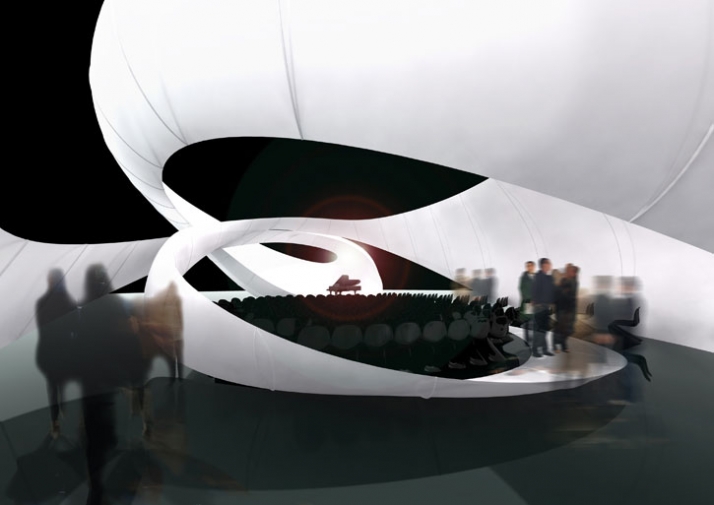
for Manchester International Festival
3D rendering // courtesy of Zaha Hadid Architects
JS Bach / Zaha Hadid Architects Chamber Music Hall at Manchester Art Gallery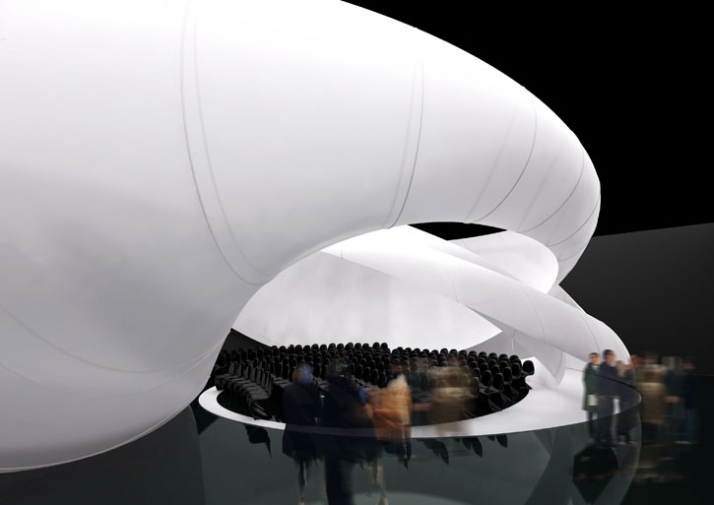
for Manchester International Festival
3D rendering // courtesy of Zaha Hadid Architects
Recent Articles

Bellevigne Hotel Taps into Burgundy's Rich Winegrowing Heritage






